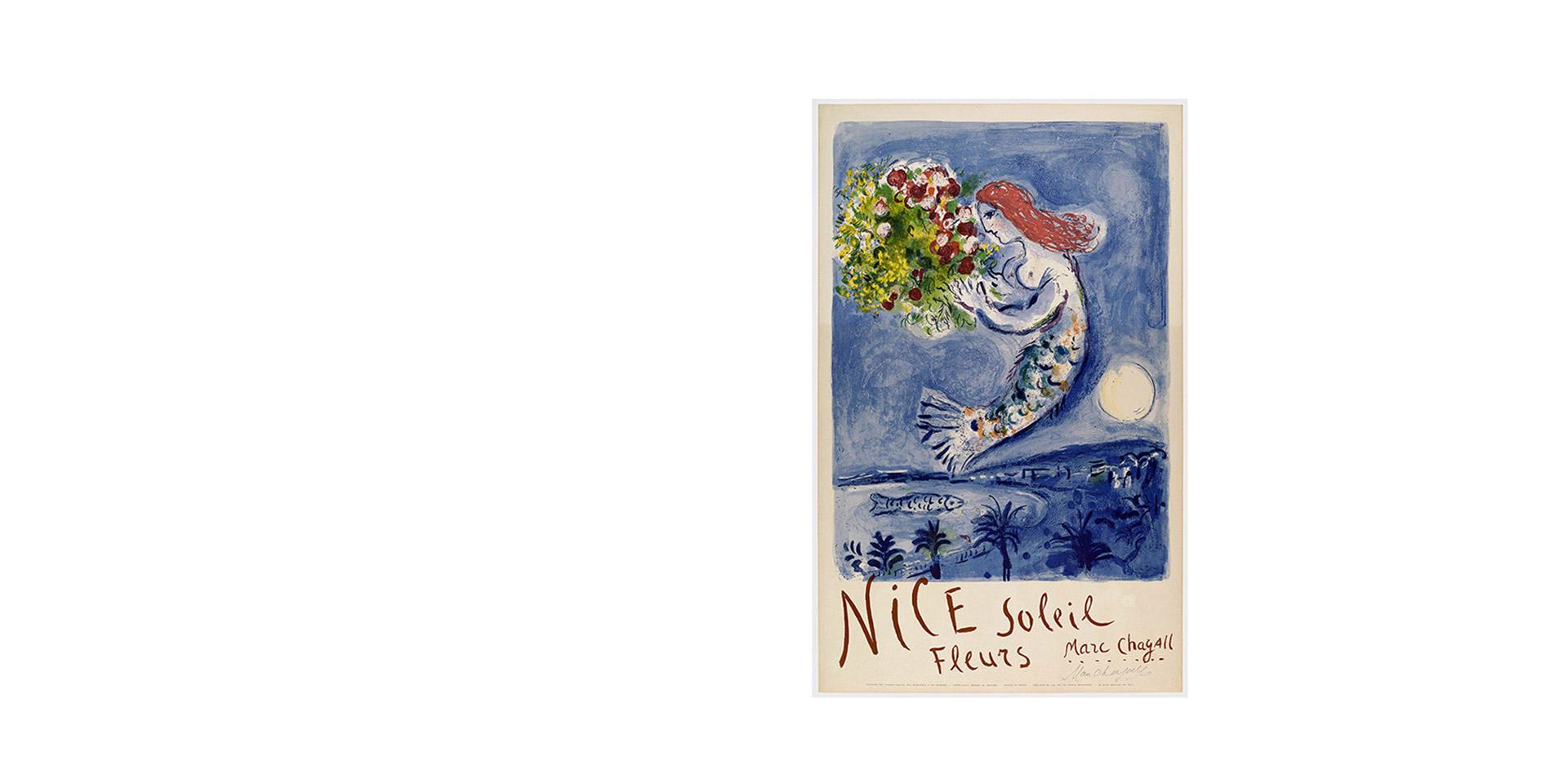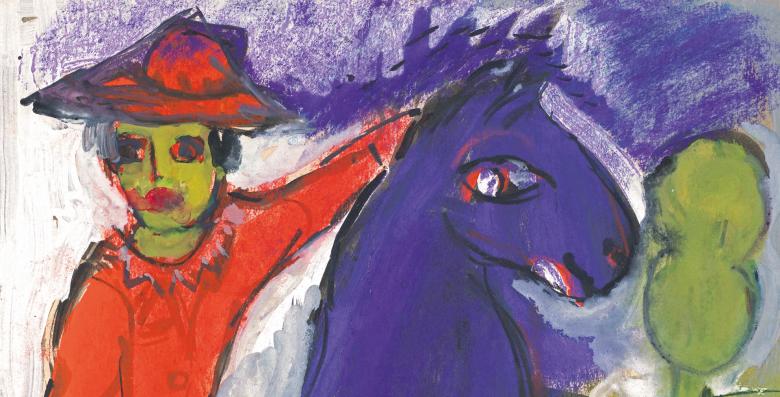The exhibition explores the still unknown links that Marc Chagall had with the city of Nice. The Côte d'Azur attracted the Belarusian-born artist very early on. He discovered the region in the 1920s during his travels through France. But it was not until 1950, at the age of 63, that he settled there permanently. He lived in Vence until 1966, then in Saint-Paul de Vence where he died in 1985.
Although he lived in the hinterland, Chagall nonetheless showed a strong attachment to the city of Nice. When he went there for the first time in 1926, during a trip to the South, a real revelation occurred to the artist. His painter's eye was irresistibly attracted not so much by the azure blue of the sea and the brightness of the sky, but by the intense flamboyant vegetation. In front of the bouquets in the flower market, Chagall perceived so many colourful sparks to be reproduced on canvas. When he moved to the Côte d'Azur a few decades later, these bouquets exploded in his works, which were then enriched with new shades inspired by the southern light. The artist's palette gives pride of place to blue, a colour that embodies the Mediterranean more than any other, but which is also, above all, his favourite colour.
After the Second World War, Chagall settled on the Côte d'Azur and lived side by side with other famous artists, Henri Matisse and Pablo Picasso. Honoured by the presence of such creators, the cities of the region pay them brilliant tributes. Nice, in particular, showed a great attachment to the work of Chagall. In 1952, an important retrospective of his work, including numerous paintings from the Russian period, more recent works of biblical inspiration, as well as ballet decorations and costumes, was held on the Promenade des Anglais, at the Galerie des Ponchettes. Other exhibitions follow in the same place or at the Galerie de la Marine in Nice.
In addition to the temporary exhibitions, Nice had the privilege of hosting a permanent work by Chagall: Le Message d'Ulysse, a monumental mosaic created in 1968 with the mosaicists Heidi and Lino Melano for the Faculty of Law, which was then under construction.
But the most striking testimony to the exceptional links forged between Chagall and Nice remains without question the national museum devoted to the artist's work. On a plot of land donated by the city below the Cimiez hill, the architect André Hermant erected a building with sober and pure lines. It was intended to house the Biblical Message, a masterly collection of works donated to the French state by Marc Chagall and his wife Valentina in 1966. Inaugurated in 1973, this museum is for the artist a testimony of his attachment to his host country, France, but also to the Mediterranean.
The exhibition organised at the Marc Chagall National Museum as part of the Promenade(s) des Anglais event presents these strong links between Chagall and the city of Nice. At the heart of this dialogue is a famous work.
In the early 1960s, Mayor Jean Médecin asked Chagall to create a poster for the city. Chagall depicted the Bay of Angels, bathed in azure light. Above the city, a graceful mermaid holding a flamboyant bouquet of flowers stands guard like a tutelary goddess. Below the image are a few handwritten words: "Nice Soleil Fleurs" accompanied by the artist's signature. Published in 1962 by the Commissariat Général du Tourisme, the poster, "the most beautiful visiting card that Nice could wish for", according to Jean Médecin, was distributed in foreign countries to promote Nice and the Côte d'Azur.
What is less well known is that the creation of this poster gave rise to a series of works inspired by Nice and the Baie des Anges. Chagall produced a masterly set of preparatory gouaches, exhibited in 1962 at the Musée Masséna in Nice. These gouaches show his talent as a colourist. The Promenade des Anglais and the Bay of Angels are transcribed in a bright and luminous palette. These images are crossed by the protagonists of the artist's familiar repertoire: couples of lovers, mermaids, bouquets of flowers and fish. The gouaches were then transcribed into lithographs in the Mourlot workshops, published in 1967 under the title Nice et la Côte d'Azur.
The exhibition Nice, Soleil, Fleurs. Chagall and the Bay of Angels brings together a remarkable group of works from the museum's collection, private collections and institutions in Nice. The poster created for Nice, several preparatory gouaches and the twelve lithographs for Nice and the Côte d'Azur, as well as photographs, posters and archival documents provide a panorama of this fruitful encounter. The exhibition demonstrates the varied and strong links that united Chagall to Nice and of which the Marc Chagall National Museum is the best incarnation.
Curator:
Anne Dopffer, General Curator of Heritage, Director of the National 20th Century Museums of the Alpes-Maritimes
Sarah Ligner, heritage curator at the Musée national Marc Chagall
Opening of the exhibition on Saturday 4 July 2015, at 11am
Visuel : Marc Chagall, La Baie des Anges, 1962, lithographie. Nice, musée national Marc Chagall © Photo: Rmn - Grand Palais / Adrien Didierjean © ADAGP, Paris, 2015.
Open every day except Tuesdays, 25 December and 1 January.
From 2 May to 31 October: from 10am to 6pm
From November 1st to April 30th: from 10am to 5pm
Ticket sales stop 30 minutes before the museum closes.
The entrance ticket includes access to the permanent collection and a multilingual audio guide.
Exhibition rates :
Full price: 10€
Reduced rate: 8€
Groups (10 people or more): 8.50€


